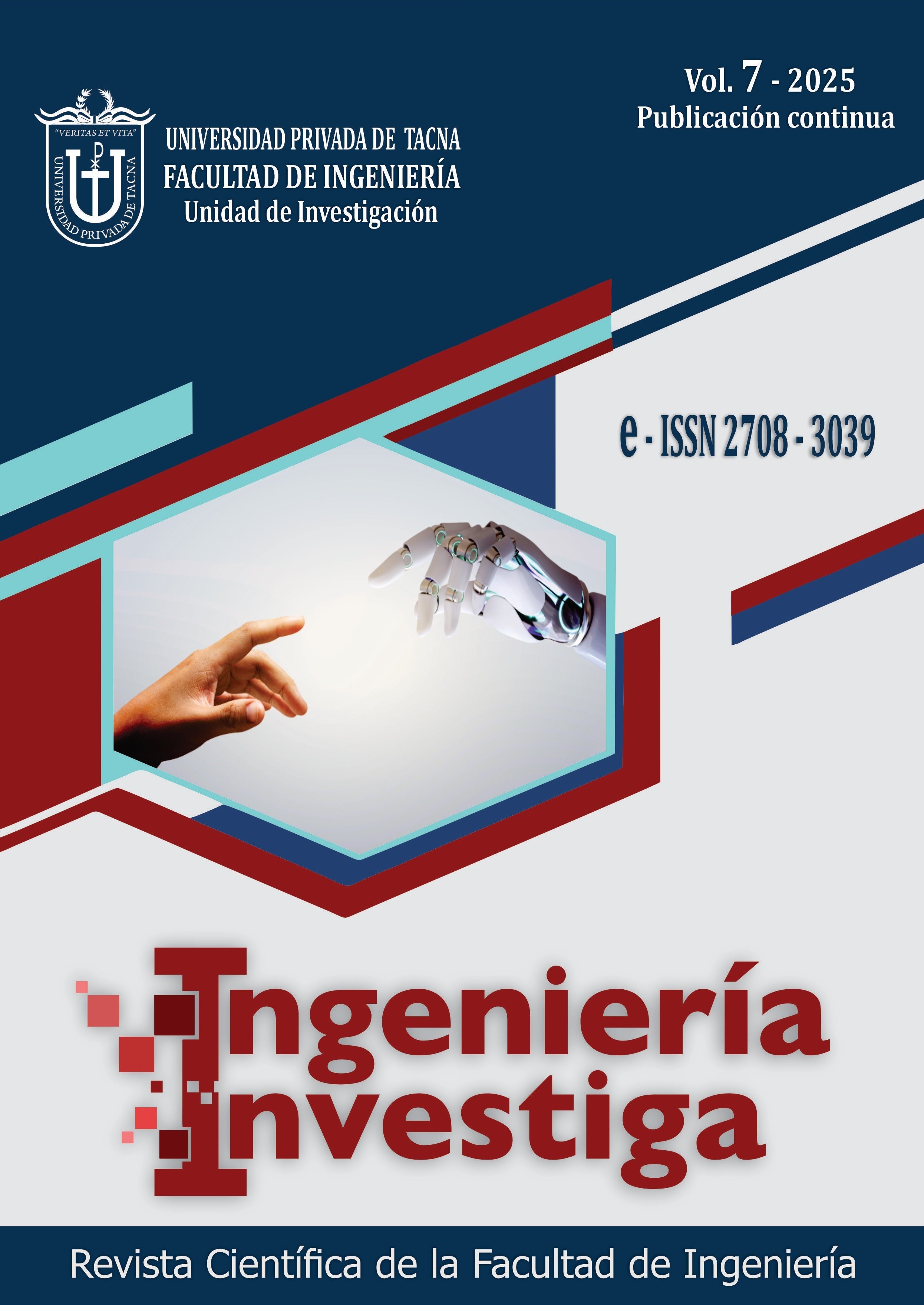Treatment of arsenic-contaminated water using natural red clay as an ecological adsorbent
DOI:
https://doi.org/10.47796/ing.v7i00.1289Keywords:
natural adsorbent, arsenic, heavy metals, contaminant removalAbstract
Water intended for human consumption faces increasing contamination by arsenic, a toxic metalloid naturally present or derived from anthropogenic activities, whose prolonged exposure poses a serious public health risk. In response to this problem, the study aimed to evaluate the effectiveness of natural red clay as an ecological adsorbent for arsenic removal from water. A Plackett–Burman experimental design was applied to identify the significant variables, and the Response Surface Methodology (RSM) was used to optimize the process. Six factors were analyzed, among which the Pareto analysis identified firing temperature, Fe₂O₃ content, and red clay percentage as the most influential factors, with a significance level of α = 0.05 and a determination coefficient of R² = 0.74. Subsequently, optimization through RSM achieved a maximum arsenic removal of 85.1% under conditions of 90% red clay, 20 % Fe₂O₃, and 800 °C, with a fitted model of R² = 97.78 %. In conclusion, red clay modified with ferric oxides represents a viable, economical, and sustainable alternative for treating arsenic-contaminated water, with strong potential for application in rural communities where conventional methods are limited.
Downloads
Downloads
Published
How to Cite
Issue
Section
License
Copyright (c) 2025 Abrahán Fernando Trejo Espinoza, Percy Fermín Velásquez Ccosi, Juan Carlos Ponce Ramírez

This work is licensed under a Creative Commons Attribution 4.0 International License.








